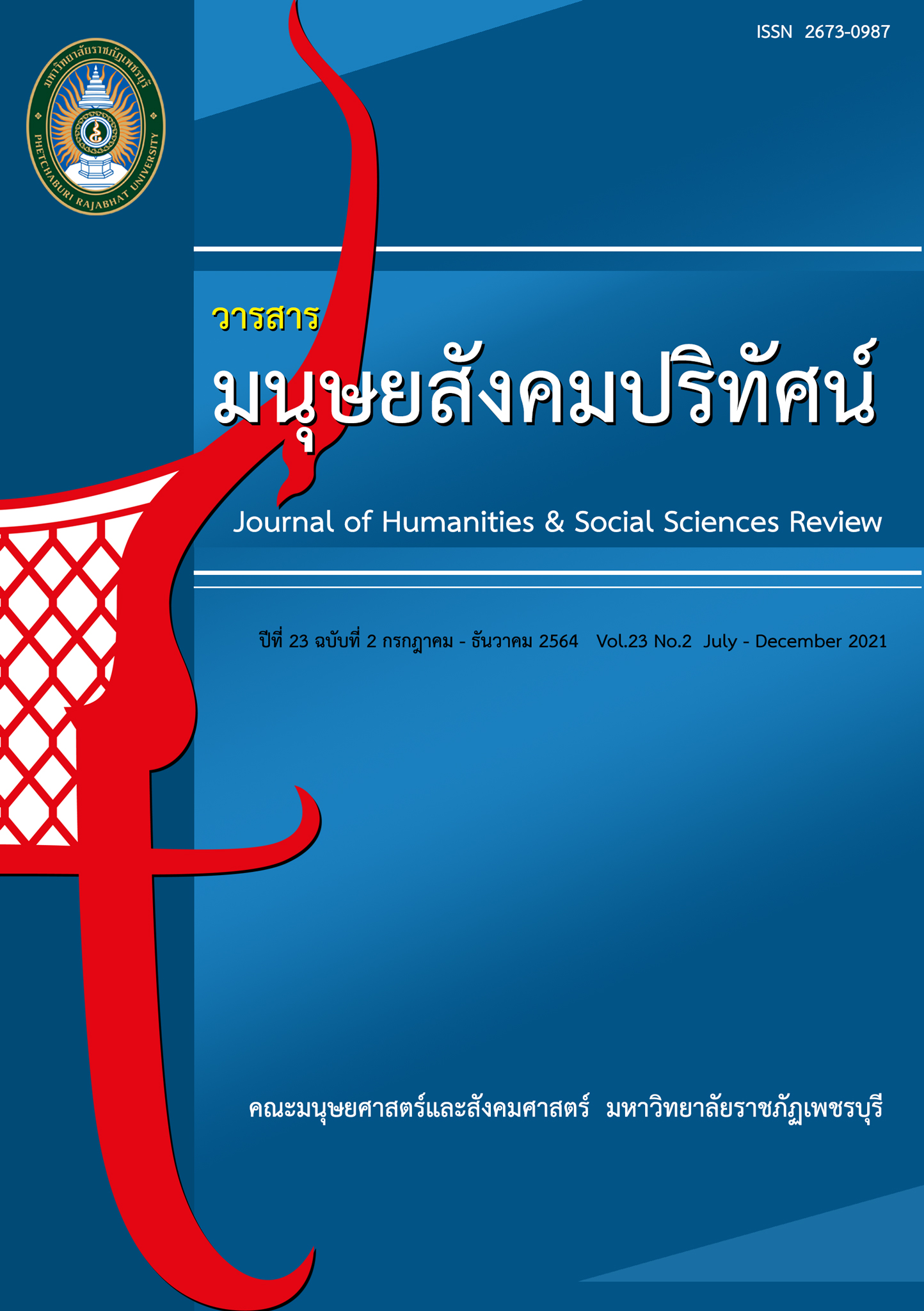Participation of Local People in the Management of Cultural Tourism Activities: Community of Ban Khun Samut Chin, Samut Prakan
Main Article Content
Abstract
The objectives of the study were 1) to explore cultural resources for tourism at the community of Ban Khun Samut Chin and 2) to study the participation of local people in the management of cultural tourism activities at the community of Ban Khun Samut Chin. The data was collected by qualitative research methodology.The semi-structured interview and participant observation are selected as tools. Moreover, the data is analyzed through content analysis. There are 38 informants including 17 local persons, 6 government officers, and 15 tourists. The results of the study reveal that cultural resources for tourism in the community of Ban Khun Samut Chin consist of 3 main cultures. First, archaeological resources include Wat Khun Samut Thawas, Shrine of Chao Pho Noom Noy Loy Chai, and Ban Khun Samut Chin Museum. Second, local which wisdom is to make shrimp paste and fried shrimp. Third, art and culture or expressed cultural resources are religion, beliefs, tradition, and culture, including the way of life. The participation of local people in the management of cultural tourism activities at the community of Ban Khun Samut Chin is “the activity of homestay tourism”. It is tourism that combines all cultures from the community blended with homestay management through a participatory process of participation in decision-making, operations, benefits, and monitoring and evaluation.
Article Details
1. Any views and comments in the article are the authors’ views. The editorial board has not to agree with those views and it is not considered as the editorial board’s responsibility. In case, there is any lawsuit about copyright infringement, it is considered as the authors’ sole responsibility.
2. The article copyright belonging to Faculty of Humanities and Social Sciences, Phetchaburi Rajabhat University are copyrighted legally. Republication must be received direct permission from the authors and Phetchaburi Rajabhat University in written form.
References
กรมการท่องเที่ยว. (2560). คู่มือการบริหารจัดการแหล่งท่องเที่ยวเชิงสร้างสรรค์. กรุงเทพฯ: ผู้แต่ง.
ธีระพงษ์ แก้วหาวงษ์. (2543). กระบวนการเสริมสร้างความเข้มแข็ง ประชาคม ประชาสังคม. ขอนแก่น: โครงการจัดตั้งมูลนิธิเสริมสร้างชุมชนเข็มแข็ง ชมรมนักวิชาการสาธารณสุขภาคตะวันออกเฉียงเหนือ.
นุชนารถ รัตนสุวงศ์ชัย. (2554). กลยุทธ์การพัฒนาการท่องเที่ยวเชิงวัฒนธรรม. วารสารมนุษยศาสตร์, 18(1): 31-50.
โยธิน แสวงดี. (2558). Content Analysis. สืบค้นเมื่อ 5 มีนาคม 2558, จาก https://www.spu.ac.th/ research/files/.
วัชรินทร์ อินทพรหม. (2562). การวิเคราะห์และการนำเสนอผลการวิเคราะห์ข้อมูลเชิงคุณภาพ. วารสารวิชาการ มหาวิทยาลัยราชภัฏพระนคร, 10(2): 314-333.
วิภาดา มุกดา. (2556). การมีส่วนร่วมของประชาชนในการจัดการท่องเที่ยวเชิงนิเวศ อำเภออุ้มผาง จังหวัดตาก. กรุงเทพฯ: มหาวิทยาลัยราชภัฏสวนดุสิต.
วุฒิชัย ศรีประเสริฐกุล. (2553). ผลกระทบของการกัดเซาะชายฝั่งทะเลที่มีต่อการเปลี่ยนแปลงของชุมชน กรณีศึกษา ชุมชนบ้านขุนสมุทรจีน จังหวัดสมุทรปราการ. กรุงเทพฯ: จุฬาลงกรณ์มหาวิทยาลัย.
สมชาย วรกิจเกษมสกุล. (2553). ระเบียบวิธีการวิจัยทางพฤติกรรมศาสตร์และสังคมศาสตร์. อุดรธานี: อักษรศิลป์การพิมพ์.
สายันต์ ไพรชาญจิตร์. (2544). รายงานการศึกษาวิจัย โครงการวิจัยและพัฒนาแหล่งเรียนรู้สำหรับการศึกษาตลอดชีวิต: กรณีศึกษานครประวัติศาสตร์พระนครศรีอยุธยาและพื้นที่ใกล้เคียง. ม.ป.ท.: ม.ป.พ.
สุภางค์ จันทวานิช. (2549). วิธีการวิจัยเชิงคุณภาพ. กรุงเทพฯ: จุฬาลงกรณ์มหาวิทยาลัย.
Arcranon, P., et al. (2000). Trekking tours: Impact on the environment and local people. Bangkok: Thailand Research Fund.
Cooperative Research Center for Sustainable Tourism. (2008). Culture and heritage tourism: A growing and evolving industry in Australia. Retrieved March 5, 2015, from http://www.sustainabletourismonline.com/awms/Upload/Resource/CRC%208012%20Culture%20and%20Heritage%20bk_LoRes.pdf.
Peleggi, M. (1996). National heritage and global tourism in Thailand. Annals of Tourism Research, 23(2): 432–448.
William. G. (2005). สังคมจีนในไทย. กรุงเทพฯ: ไทยวัฒนาพานิช.


